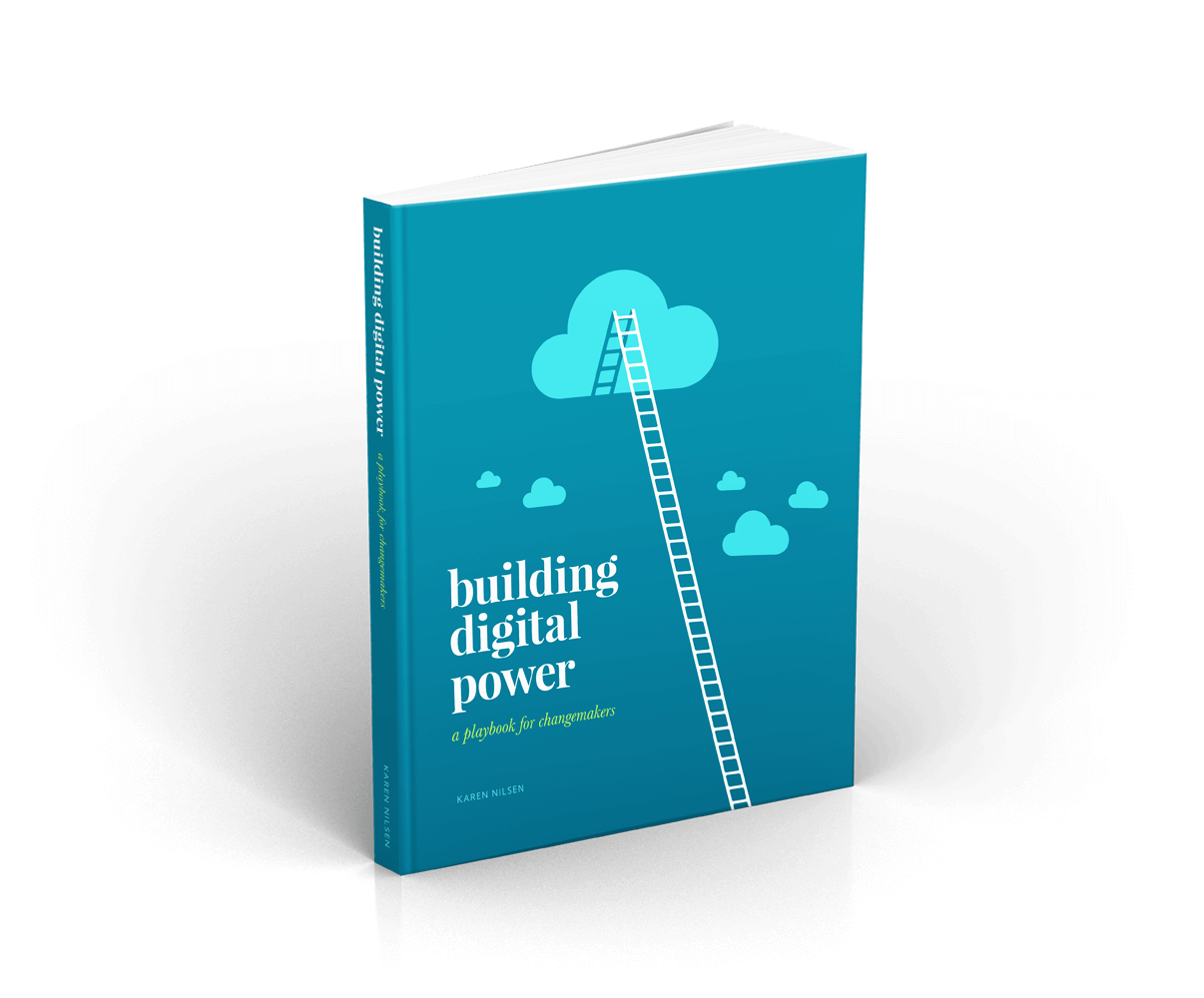Get a free digital strategy tip of the week:
Unsubscribe any time. We respect your data. View the privacy policy.
Imagine you’ve been asked to have an important conversation with ... ‘someone’. Chances are, you’ll be much happier to have that conversation if
(Not in that way). Do you ever find yourself staring at your screen, wishing the thing you are trying to write was done
You’ve sent your action or appeal broadcast. It went okay. But you’re not satisfied that enough supporters noticed it or recognized its urgency.
These folks are some of the most innovative and transformative communicators in (and beyond) our movement. And they’re on a mission to help
The curse of knowledge is a cognitive bias that leads us to overestimate the knowledge of our audience. If you allow this curse
Trying something risky and new? These methodologies can save you from diving in head first when it might have been wiser to test
If we want to get the most out of email, we need to make it personal. If every message we send sounds
Imagine you’re at a party. There are plenty of new people you could meet and talk to. There’s a guy talking himself up.
Technology moves at light-speed. Every day, smart people are pushing the boundaries of digital design, user experience, and communication. If we hope
Cognitive biases are powerful mental distortions that affect the way we think and behave. They are so powerful that they can lead
Your organization and its communication style is unique. Defining it will consolidate expertise, build confidence, and help you and your co-communicators hone an
It would be a lie to claim that ‘delivery time’ is a highly influential factor in email open rates. Compared to heavyweights
SPOILER: it’s not good. Sure—you know you’re writing an email to 5,000 people. But your task is to make your reader feel like
Great communication is not just about what you say but how you say it. Who says it also matters. You won’t always
Knowing how much or how little to say starts with being clear about your objective. Rarely is it our job to turn readers
What You Need to Know about ‘Deliverability’
Not every email you send will find its way into an inbox. Optimal deliverability is needed to give your emails a fighting chance of being opened. Poor deliverability will send many of your messages into spam folders. Or worse—your mailserver could be blocked.
Don’t let this scare you—there’s a lot you can do (and should be doing) to protect deliverability. Everything from email content to server setup will be influencing your rating. Your email broadcast system should report your deliverability rate in addition to all your other email analytics. You want that rate to be as close to 100% as possible. Let’s look at how to get it there.
Ensure your opt-in process is up to snuff
First things first—did you gain permission to send that email? Don’t assume that if someone sends you an email enquiry that they will automatically be happy to hear from you on an ongoing basis. Adding ‘contacts’ to your subscription list is shady. Make sure you’re using a legitimate single opt-in or double opt-in process. Only ever add someone to your list when they explicitly give you their permission.
Avoid spammy email content
Just because you did the right thing and gained permission to send emails to your supporter doesn’t guarantee that your messages won’t be considered ‘spam’. Unfortunately for you, spam is in the eye of the reader. The best way to avoid being flagged is to use segmentation and always send relevant, personalized messages. Here are some other big things to watch out for:
- Misleading subject lines. Sneaky subjects might get you a spike in opens, but this attention will backfire in the form of spam reports. A spike in spam reports won’t just impact a single message—it can harm your long-term deliverability. Avoid clickbait. Respect your subscribers with quality subject lines.
- Spammy language. It starts with a salutation. Lines like “Dear friend/reader/[email]” won’t help you convince spam filters that you know the person you’re writing to. This is why it’s important to always capture (and use) your reader’s first name. Certain ‘spam words’ associated with hard sells can also exacerbate a deliverability problem. Avoiding these phrases isn’t hard for cause-oriented non-profits. In any case, aim for an authentic, conversational tone. Not only is this less likely to trigger spam filters, it will engage your readers more effectively, too.
- Image-heavy messages. It’s fine to send images in your emails, but avoid rendering text as images and never send an image-only message with no text. Image-only emails may be inaccessible to sight-impaired subscribers. They’ll also fail on anyone with images turned off and they’re unlikely to ‘forward’ well.
- No ‘unsubscribe’ link. Forgetting to include a (legally required) unsubscribe link can get you into trouble. The big mailservers know when you’re sending a broadcast email to their domain, so don’t risk it. Always offer a clear unsubscribe link. And consider reminding people how they got onto your list. This can help reduce spam reports. For example: “You received this because [your email] is subscribed to the [your organization] email list.”
- A bad sender. A bad sender address is one that’s unrecognized, unserviced (I’m looking at you, noreply@), or pretending to be something it’s not. This is easy to get right—so there’s no excuse for getting it wrong. Use a serviced sender address; identify your organization in the ‘ from name’; and don’t impersonate anyone!
Stop sending to inactive email addresses
If a receiving server detects that you keep sending messages to non-existent email addresses (or addresses that haven’t been used in a long while) your deliverability rating may suffer. That’s right—the more ‘dead’ inboxes you try to hit, the harder it is to get your messages delivered to live ones.
Fix this by ‘cleaning’ your email list once a year if not more frequently. Not only should you be automatically removing any ‘hard bounces’ from your list, it’s also necessary to identify addresses that aren’t opening or clicking on your messages so that you can remove them, too.
If you’re attached to your list size, this is going to be tough. But remember—size doesn’t measure the worth of your email list. Engagement does. Cleaning your email list will improve deliverability which will improve engagement and also give you higher and more accurate open, click, and unsubscribe metrics. That’s what you want, right? Of course it is! So, do the hard thing. Identify subscribers who slept through your broadcasts for the last 6 months and let them go.
Unlock more digital strategy secrets.
Free eBookAuthenticate your sender domain
I know, I know—stuff’s getting technical. Stay with me.
In an effort to stop spammers from ‘spoofing’ their sender address, mailservers have developed clever ways to distinguish legitimate senders from illegitimate ones. There are some very important steps that your server administrator needs to take in order to verify the legitimacy of your sender domain. Your email broadcast system provider should walk you through the steps necessary to complete the ‘SPF’ and ‘DKIM’ authentication processes. Without these measures, many receiving mailservers will refuse to deliver your broadcast emails—regardless of the quality of their content.
Sometimes you can be doing everything right and still run into trouble. If you are using a shared mailserver, for example, your deliverability could be impacted by the bad behavior of other domains sharing your server’s IP address. The more you value deliverability, the more it pays to have dedicated IPs, or a highly reputable email broadcast provider.
It’s all connected
Here’s the thing: every email you send impacts the next. Getting flagged as spam too many times can degrade your sender reputation and hurt your long-term deliverability. That means emails sent by the fundraising team can impact the performance of emails sent by the campaign team. And vice versa. This makes deliverability a whole-of-organization responsibility.
Deliverability is not an exact science. We are all at the mercy of changing algorithms. Solving a deliverability issue can be infuriating, but it helps to know that deliverability algorithms aren’t your enemy. They exist to protect the integrity of the emails that your subscribers are receiving. Consider what would happen if these algorithms didn’t exist: most of the messages we receive would be spam ... which means legitimate emails would get lost in the noise ... which means people would give up on checking their email ... which means your email broadcasts would be completely ineffective. Deliverability algorithms are your friend.
Deliverability algorithms are your friend. Learn to work with them.
Deliverability is a big deal. Some companies dedicate entire positions or departments to optimizing deliverability. Most of us aren’t this lucky. If you use a third-party broadcast system, your provider should be doing much of the technical work to optimize deliverability on your behalf. They may even help you solve a deliverability issue if you get stuck. However, a great deal of the responsibility rests with your list and your content.
Understand the biggest pitfalls and know how to avoid them. Monitor your deliverability along with other email metrics so you can immediately detect and fix any big issues such as blocklisting.
Was this tip useful?


Like this tip? Share it!






